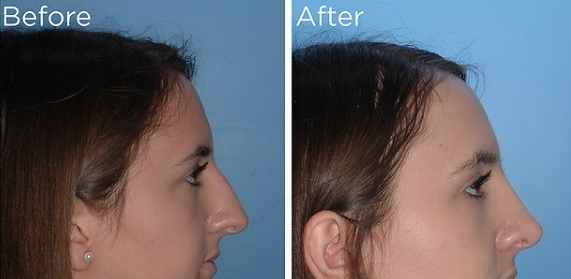The Best Guide To Rhinoplasty Austin Tx
Table of ContentsSome Known Factual Statements About Rhinoplasty Austin Tx Things about Rhinoplasty Surgeon AustinThe Basic Principles Of Rhinoplasty Surgeon Austin
Healing by secondary intention (re-epithelialisation) takes place even when the wound extends to the nasal bone. Although the rate of recovery relies on the patient's wound-healing capacity, nasal wounds measuring up to 10 mm in diameter typically recover in at 4-weeks post-operative. However, one capacity, but rare, problem of this nasal correction approach is the formation of a medial canthal web, which can be fixed with two (2) opposing Z-plasties, method which eliminates the disfiguring tensions exerted by the scar tissue's contracture, its shape, and place on the nose.e. on the left nostril. Nose surgery: A divided area style utilized in Mohs surgery for excising cancerous lesions prior to nasal reconstruction. (b) Nasal dorsum and lateral nasal wall problem The size of the nasal defect (wound) took place, in either the dorsum or the lateral wall, or both, determines the reconstructive skin-flap technique relevant to the corresponding visual nasal subunits.


A wound in the lateral nasal wall that is greater than 15 mm in size can also be fixed with a superiorly based, nasolabial-flap, which is particularly fit for fixing distal defects that lay amongst the convexities of the nasal tip and the alar lobule. The nasolabial flap can remedy flaws that understand the distal two-thirds of the nose, if there is a supply of skin enough for constructing the base of the flap pedicle; and the donor websites can not be closed mainly.
Nasal problems involving either the bone or the cartilage of the lateral nose are best handled with complimentary grafts of flat septal bone and of cartilage. Little defects of the nasal dorsum can be covered with cartilage grafts gathered from either the septum or the concha of the ear. The correction of large-area problems of the nasal dorsum requires the stable assistance of a bone graft attached either with a lag screw or with a low-profile plate.
Rhinoplasty Austin Tx - Truths

( c) Nasal idea problem The width of the human nasal-tip ranges 2030 mm; the average width of the nasal suggestion, determined in between the 2 alar lobules, is roughly 25 mm. A nasal skin defect of less than 15 mm in diameter can be managed with a bilobed flap; the cosmetic surgeon cuts the edges of the injury (defect) to match its measurements (length, width, depth) to the natural curve at the border of the nasal suggestion.
If the nasal-tip injury is greater than 15 mm in size, the cosmetic surgeon enlarges it to understand the whole aesthetic subunit impacted by the defect, and the reconstruction of the nasal subunit done with a forehead flap. rhinoplasty surgeon austin. If the nasal-tip problem likewise includes the nasal dorsum, a forehead flap is shown for reconstructing the entire nasal-tip and dorsum.
The flaw of an alar dome, which keeps sufficient anatomic support-tripod setup, can be corrected with an onlay graft collected either from the nasal septum or from the conchal cartilage of an ear. The surgeon forms the cartilage graft into the shape of a shieldits widest margins become the replacement alar domes.
Defects of the lateral crura can be remedied with a flat strut of formed cartilage, however, if the click here now support of the median crura is absent, then a columella strut must be placed, and attached at the level of the anterior nasal spinal column. If a strut of nasal-septum cartilage proves too weak, then a rib cartilage strut can be applied to provide the appropriate nasal support; afterwards, the strut is covered with onlay grafts. rhinoplasty surgeon austin.
The surgeon attaches them to the anterior nasal spinal column, and to each side of the (pear-shaped) pyriform aperture; the remainder of the collected conchal cartilage is used as onlay grafts to enhance the nasal tip. A nasal-tip lining flaw is unusual, since of its midline location; yet, the reconstruction is with an anteriorly based septal mucosal flap that is rotated into place to provide adequate protection and correction of the nasal lining problem.
More About Rhinoplasty Surgeon Austin

Nasal skin problems can be visit this website fixed with a medially based bilobed flap, which is emplaced to provide appropriate skin coverage for injuries restricted to the alar lobule. If the entire lobule is missing, it might be necessary to leave the second-lobe donor-site injury partly open; it will close at 24 weeks post-operative; afterwards, the scar can be modified.